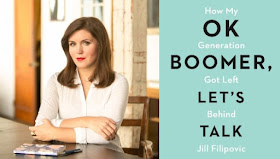In a way, history is like that. It goes on and on. And while the neighborhoods often change, there are things along the way that repeat themselves over and over again. In American history, one of them is certainly racism and discrimination, but also our ongoing flirtation with authoritarianism. Our fascination with bullies, the appeal of strength that sometimes proves to be more than just meanness.... it’s really evil.
Whether it was Father Coughlin on radio, Joe Pyne on television, Huey Long in politics, or in the contemporary era, Joe McCarthy and Donald Trump.
The added reality is that each episode pushes the envelope of what’s acceptable. The predicate for new norms is laid out and the next would-be talk show host or political demagogue has to go further.
Perhaps no one pushed the envelope further than Joe McCarthy. So much so that the idea of McCarthyism became baked into our lexicon. Needless to say, now in the midst of one of those flirtations, it seems the perfect time to go back and look at Joe McCarthy with journalist and author Larry Tye, whose new book is Demagogue: The Life and Long Shadow of Senator Joe McCarthy
My conversation with Larry Tye:







